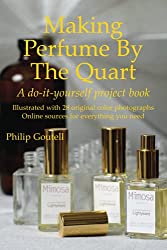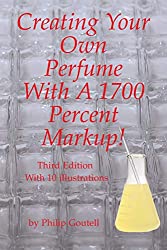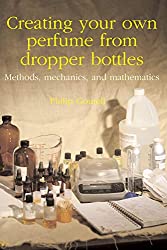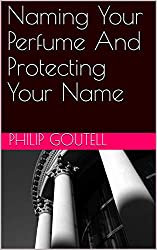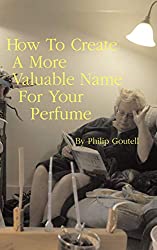Selling Perfume Online
Some Possibilities —
Sampling
Scent is powerful. When we are exposed to a scent it reaches our brain so quickly we can only react; it doesn't give us time to think. It's the way our bodies are wired. Perfume is, of course, scent. It is fast acting, for better or for worse. We smell; we react. Then we may think about what we have just smelled, if the scent has elicited particular notice. A great fragrance can help "sell itself."
But what happens when you're selling your perfume online? There are many good reasons for taking an online approach to distributing your perfume. Arrangements with retailers can be difficult to negotiate. Perhaps the power of your perfume is enough to make an immediate sale, once someone has smelt it. But first you have to get some of it — a sample — to them so they can smell it. Here are three ways you to do this —
Method # 1 — Scented test blotters
This is a low key method and might seem a bit amateurish but if your following feels a strong personal relationship with you, the perfumer, it can be appropriate.
You simply spray or dab a unscented test blotter (for sources, visit the Perfume Projects Vendors listings ) with your fragrance, wrap the scented blotter in aluminum foil or plastic wrap and mail it in a business size (or even smaller) envelop along with details for ordering a full size bottle.
The virtue of this method is that your shipping cost will be minimal and you won't be running up against prohibitions on mailing "hazardous materials" — i.e., perfume.
If you are paying both product cost and shipping and if your requests for samples are modest in number and if your conversion rate (people who buy from you after receiving your sample) is acceptable, this can be an excellent way to distribute samples. A "one-person" or small company can prepare the sample packages by hand; a larger company could have sample packages professionally prepared by an outside vendor.
Method # 2 — Glass sampling vials
Small glass vials with a plastic dabber stopper are the classic way of distributing perfume samples. At one time when you bought an expensive perfume at a sales counter you would be given a gift bag of samplers, often in these glass vials. Glass vials are cheap and can be mounted on a card with your sales message. A vial might contain enough fragrance for two or three small applications.
I have used glass sampling vials myself, both the standard ones with the plastic dabber top and another type, just slightly larger, that had a snap-on spray closure. This was a class act among samples and could also be attached to a business card size card to present details about the fragrance along with ordering information.
There are some downsides to using glass vials, even glass vials with a spray. Glass can be broken. I once watched a woman drop one on the hard floor of a doughnut shop and, surprising to me, the glass shattered freeing the scent for all to enjoy, whether they wanted to or not. This could happen in the mail too unless the vial was protected by bubble wrap or a well padded mailing bag.
And this brings us to two issues: shipping cost and postal regulations. Using a padded bag for shipping is a good deal more expensive than using a business envelope. You, the perfumer, would not want to bear the cost so you will have to ask your prospect to pay something for shipping. This once again puts you in the position of having to "sell" your perfume before it has been smelled.
The second issue is postal regulations. Does your postal service allow you to send these sample vials through the mail? ship these sample vials? Although the volume in the vial is minimal, will you come up against an all-inclusive ban on shipping perfume? It will be up to you to be sure you are in compliance with postal regulations but my own experience suggests that you could inquire at six different post offices and get six different answers. Likely if you wing it and just do it, odds are you will never have a problem but if you suddenly have a problem, it could put a major kink in your sampling system.
There is one more strike against using glass vials to sample, particular those with the plastic dabber top: they tend to look cheap and unexciting. They have been around too long. People have seen too many of them and, unless someone is a real perfume enthusiast who will judge by the scent rather than the presentation, they don't have a "value" image. They look like throwaways. While you may find ways to use glass sampling vials effectively, in my mind their day has passed.
As to the sprayer vials, they are very hard to find. Mine came form a closeout and although I was able to purchase a large quantity, I haven't found them anywhere since.
Method # 3 — Small bottles
If your regular size bottle is anything from one to two ounces, a 1/4 ounce bottle makes a good sampler. Historically major fragrance marketers made use of miniature bottles, bottles that looked like their full size bottles but were more like doll house size, containing just a small amount of fragrance.
These miniatures were effective because they previewed not only the perfume but also the packaging and packaging, like it or not, plays a major role in the sale of perfume.
Today to sample with small bottles you are unlikely to find any that reflect the design of your standard size but you can create a "family" effect through use of a sticker similar in design to the sticker used on your regular bottles. Because 1/4 ounce is a more generous quantity than the contents of a glass vial, your customer now has a chance to "live" with your perfume, to let it grow on him or her, and (hopefully) fall in love with it.
There are some difficulties with this approach. First, the cost of packaging and delivery again requires a payment from the customer to cover your costs, so again you must sell what cannot be smelled, but at least the sale to be made will be for a much smaller amount than the price of a regular bottle.
Postal regulations again can intrude and now you are shipping a bottle that really looks like perfume. Then there is another issue, perhaps more serious than the others. Suppose even if your customer falls in love with it, 1/4 ounces of your fragrance is enough to keep him or her satisfied for the time being ... and hence no desire or need to order a full size bottle! With this in mind it is worth making an effort to make the sale of even your small bottle profitable, whether the customer converts to the full size bottle or not.
Discussion
One powerful lesson jumps out of this look at methods to distributed samples of your fragrance. Before you can send out samples you have to do some selling. Even if you were to offer your samples absolutely free, without any charge at all, you would still have to sell prospects on the value of what you were sending them and your sales pitch would have to be strong enough to motivate them to take the steps necessary to request your samples — i.e., fill out a form, send you an email, give you their names and a shipping addresses, etc.
No matter how you slice it, selling perfume involves selling ... right from the start.
Homemade perfumes generally lack commercial value, regardless of how wonderful they may be, because their creators fail to record how their perfumes were made. To profit from a perfume, to sell it, to sell the rights to it, or have somebody sell it for you, you must be able to make more of it. To make more you need the formula, the record of how the perfume was made: what materials were used and how much of each material was used. While the formula is nothing more than a recipe, a simple piece of paper, it is the key to unlocking your perfume's commercial potential. With the formula in your hand you have the ability to make a few dozen bottles more or, like the celebrities, tens of thousands of bottles. How to create an international production formula for your homemade perfume is a guide to getting you started on the right foot, correctly documenting everything you do as you are doing it, and then using these notes with some basic mathematics to write a simple, accurate, universal formula for your perfume. Writing formulas for your perfumes can change the way you think about them. With your formulas in hand your creations are no longer "here today, gone tomorrow." Now, thanks to your library of formulas, your perfumes become immortal!
While much is written about perfume – the beautiful fragrances... the beautiful bottles – little is available on the "mechanics" of perfume production – the steps that take place on the "factory floor" where a beautiful vision is turned into a finished product, a "ready to sell" perfume. Now you can experience all of these steps, hands on, by making just one quart of your own perfume. If you follow each chapter and do what you are instructed to do, you will end up with from 8 to 64 bottles of your own perfume, depending on the capacity of the bottles you select. Along this "insiders journey," each step is profusely illustrated with professional color photographs and you'll learn — • Exactly what alcohol you'll need and where to get it • Why you'll want (just a little!) water in your perfume • What type bottles you'll need and why you cannot use others • Why you will use a spray and not a cap • How to fill and seal your bottles • How to label your bottles with the correct information so they will be legal for sale • How to select a name for your perfume that will allow you to acquire powerful trademark rights free. If you are a developer of scents you are encouraged to use one of your own for this project. If you are not a scent creator yourself you'll learn how to get a fragrance oil that is exactly right for this project. Online sources are given for all required supplies and materials. Nothing can hold you back from starting your project immediately!
Perfume is famous for the markup it can achieve, even for a middle market fragrance. While "everybody knows" that perfume costs next to nothing to make (not completely true) the making of it is often considered an esoteric secret. "Creating Your Own Perfume With A 1700 Percent Markup!" details how a 3-person company with no experience created their own fragrance in response to a marketing opportunity that was too good to pass up. The book explains exactly what was done to create a fragrance for that opportunity but it is far more than a history of the author's project. "Creating Your Own Perfume With A 1700 Percent Markup!" lays out every step in the process of creating your own perfume, either as a do-it-yourself project – and without the benefit of automated equipment some compromises and workarounds are required – or full bore professional production under your supervision. Either way you will be producing a quality fragrance at a remarkably low cost. Do you have a marketing opportunity that would be wildly profitable if only you could obtain your fragrance at a ridiculously low cost? "Creating Your Own Perfume With A 1700 Percent Markup!" is the guide you need to do it.
Now when you make your own perfume you can make it fully "commercial" meaning you will be creating a product ready for regular, continuous sales to friends, relatives, and the public! If the fragrance you've made has already won praise, why not share it with others? Some might pay you for it and want it for their web stores or retail boutiques! Creating your own perfume from dropper bottles: Methods, mechanics, and mathematics guides you through steps that can turn your hobby project into a perfume business. Discover how close you are now and how little more you must do to take what you made with essential oils and dropper bottles into a business of your own! For an introduction to this book, watch this video.
You can build a perfume business of your own using this business plan as a guide. By following its detailed strategy you learn to identify motivated groups of potential perfume buyers. Members of these groups are near the tipping point of desire for a new perfume. You don't know these people and they don't know you but you know a marketer they trust, one who does not currently sell perfume and might never think of selling perfume were it not for your approach. Here is where you step in with a professional plan, promotion, and perfume to take advantage of this ripe opportunity for mutual profit. Before your first promotion has peaked, you will already be developing a relationship with your next marketing partner. Following this plan, you will gain more and more profit with each new marketing partnership.
A really great name, a special name that is just right for a particular perfume or perfume marketer (or entrepreneur with money to invest!) can be worth a ton of money. But few individuals with great ideas ever manage to cash in on those brilliant ideas. Instead they wait while others "discover" their idea, acquire legal rights to it and make all the money while they are left out in the cold without a penny having been earned for what was once THEIR idea.
If you are struggling to name your perfume and are looking for a name that will have real value, "Naming Your Perfume And Protecting Your Name" will help you weed out low value names and point you to names that have better marketing value plus the potential to become valuable assets in themselves.
If you have a great name you want to protect but no fragrance, "Naming Your Perfume And Protecting Your Name" will guide you through the simple steps you must take to acquire a legal right to that name before someone else grabs it! Best of all, "Naming Your Perfume And Protecting Your Name" shows you how to gain strong legal protection for your name without a lawyer and without spending more than pocket change.
Never had an idea for a product name? Never thought much about perfume? "Naming Your Perfume And Protecting Your Name" may stimulate your interest in a whole new game that, when played well, can make you lots of money without your having to leave the comfort of your home office.
When you name a perfume you create a valuable asset – the name itself. To sell your perfume you want the most effective name possible. But a good name can have value beyond the edge it gives your sales. In naming your fragrance you are creating a trademark and a trademark can have value independent of the product. The value of that trademark can vary. Much depends on how well, in naming your perfume, you follow the trademark "rules." How To Create A More Valuable Name For Your Perfume first helps you develop a name that will be effective in selling your perfume. It then prods you to make use of certain techniques that can turn a good name into a great trademark, strong and valuable. If you have questions about how to protect a name, How To Create A More Valuable Name For Your Perfume will answer many such as:
- Can you protect your name yourself or do you need a lawyer?
- Can you register a trademark without a lawyer?
- What does it cost to register a trademark?
- How do I enforce the rights I have established?
How To Create A More Valuable Name For Your Perfume covers both state, federal, and international protection.
For article updates, etc., add your name to Phil's mailing list.


Philip Goutell
Lightyears, Inc.


